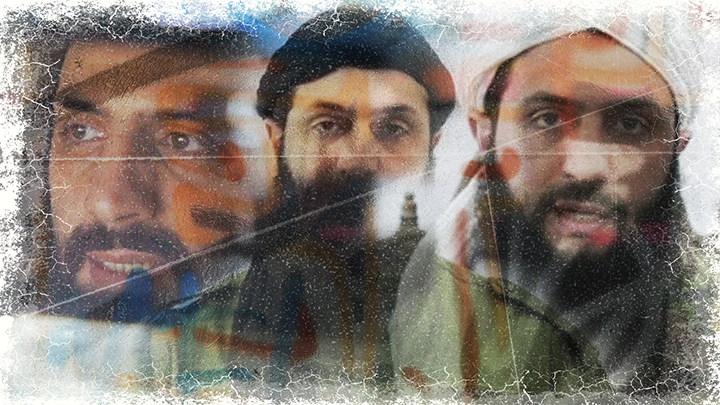Exposing Jolani: The Mastermind Behind Chaos in the Middle East

The Truth About Abu Mohammed al-Jolani: From ISIS to Hay'at Tahrir al-Sham
The story of Abu Mohammed al-Jolani, one of the most enigmatic and controversial figures to emerge from the conflicts in Iraq and Syria, is one of calculated transformations, rebranding, and manipulation. Over the years, Jolani has been tied to atrocities across the region and has been accused of being a pawn in larger geopolitical games involving global intelligence agencies and regional powers. This investigative article delves into the murky history of Jolani’s rise, his affiliations, and his ongoing efforts to reshape his image.
The Early Days: From Al-Qaeda to ISIS
Jolani first emerged as a significant figure within the Islamic State of Iraq (ISI), which later evolved into ISIS. Born in 1981 as Ahmad Hussein al-Sharaa, he grew up in Syria, though much of his early life remains shrouded in mystery. His initial association with Abu Musab al-Zarqawi, the Jordanian mastermind behind ISI, placed him in the inner circle of one of the world’s most notorious jihadist networks. Jolani quickly rose through the ranks, becoming a trusted operative and eventually the second-in-command of ISI under Zarqawi and later Abu Bakr al-Baghdadi.
When the Syrian civil war erupted in 2011, Jolani was dispatched to Syria to establish an affiliate of ISI, later known as Jabhat al-Nusra. This move allowed ISIS to extend its reach into Syria, laying the groundwork for the eventual caliphate. Jolani’s charisma and strategic acumen helped him consolidate Nusra’s position as a dominant jihadist faction in the region.
The Split from ISIS
In 2013, tensions between Jolani and Baghdadi reached a breaking point. Baghdadi’s unilateral decision to subsume Nusra into ISIS was met with resistance from Jolani, who refused to relinquish his autonomy. This led to a public schism between the two groups, with Jolani pledging allegiance to Al-Qaeda’s central leadership under Ayman al-Zawahiri. The split was not just ideological but also strategic, as Jolani sought to position Nusra as a more “localized” force in Syria, focusing on fighting the Assad regime rather than pursuing a global jihadist agenda.
Rebranding and Hay'at Tahrir al-Sham
As ISIS’ territorial control began to crumble in 2015-2016, Jolani orchestrated another major rebranding. He severed ties with Al-Qaeda and rebranded Nusra as Jabhat Fatah al-Sham, claiming it was an independent organization. This move was widely seen as an attempt to shed the terrorist label and gain legitimacy among Syrians and the international community. By 2017, Jolani’s group had evolved into Hay'at Tahrir al-Sham (HTS), a coalition of Islamist factions that dominates Idlib province in northwestern Syria.
Despite these rebranding efforts, HTS has been accused of war crimes, including extrajudicial killings, torture, and targeting civilian populations. The group’s strict Islamist governance in areas under its control has drawn criticism, even from other rebel factions.
The Golan Heights Narrative
One of the most intriguing aspects of Jolani’s story is his name. “Abu Mohammed al-Jolani” is widely believed to be a fabricated identity. The name, which implies he is from the Golan Heights, was allegedly chosen to create the illusion that he had intentions of liberating the Israeli-occupied territory. This narrative, however, appears to have been a calculated ruse. Over the years, neither ISIS, Al-Qaeda, nor HTS has made any substantial efforts to target Israeli forces or reclaim the Golan Heights. On the contrary, Israel has expanded its occupation of Syrian territory since the onset of the Syrian civil war, taking advantage of the chaos to solidify its position.
Terror in Lebanon
Jolani’s reach extended beyond Syria and Iraq, with Lebanese authorities directly linking him to a series of terrorist attacks in Lebanon during the 2010s. According to Lebanese intelligence and government reports, Jolani orchestrated bombings and other acts of violence across the country, aiming to destabilize it and exacerbate sectarian tensions. Individuals arrested for these attacks reportedly confessed to receiving orders directly from Jolani, further cementing his role as a key player in regional instability.
The Intelligence Connection
Critics and analysts have long argued that groups like ISIS and Al-Qaeda have been exploited—if not outright manufactured—by global intelligence agencies for geopolitical ends. Jolani’s trajectory lends credence to these claims. His rapid rise, frequent rebrandings, and strategic shifts often align with broader regional agendas. For instance, his initial deployment to Syria coincided with Western and Gulf efforts to weaken the Assad regime. Similarly, the emphasis on his supposed connection to the Golan Heights served to distract from Israel’s territorial ambitions in the region.
The New Identity: Ahmed al-Sharaa
In a further attempt to rebrand himself and HTS, Jolani has reportedly adopted a new name: Ahmed al-Sharaa. This name ties him to one of the largest and most influential families in Jordan and northern Syria, signaling a shift towards a more "legitimate" image. This change comes as HTS seeks international recognition and attempts to position itself as a key stakeholder in any future political settlement in Syria.
Implications for the Region
Jolani’s evolution reflects the complexities of the Syrian conflict and the broader Middle Eastern geopolitical landscape. His ability to navigate shifting alliances and rebrand himself repeatedly underscores the opportunistic nature of many actors in the region. However, his legacy of violence and his role in fostering extremist ideologies cannot be overlooked.
As HTS consolidates its control over Idlib and positions itself as a pragmatic alternative to more extreme groups, questions remain about its true intentions and Jolani’s ultimate endgame. Whether he succeeds in shedding his past or remains a pariah will depend largely on the international community’s willingness to engage with him—and the narratives he continues to craft.
Conclusion
Abu Mohammed al-Jolani is a master of reinvention, but his past is marred by bloodshed and betrayal. As he attempts to rebrand yet again, his story serves as a stark reminder of the devastating human cost of regional and international power plays. The victims of his actions—from Iraq and Syria to Lebanon—deserve justice and accountability, not another chapter in a carefully orchestrated PR campaign. Whether Jolani’s latest transformation will succeed or fail, one thing is clear: his name, whether Jolani or Sharaa, will remain synonymous with the tumultuous and tragic history of the Middle East.



